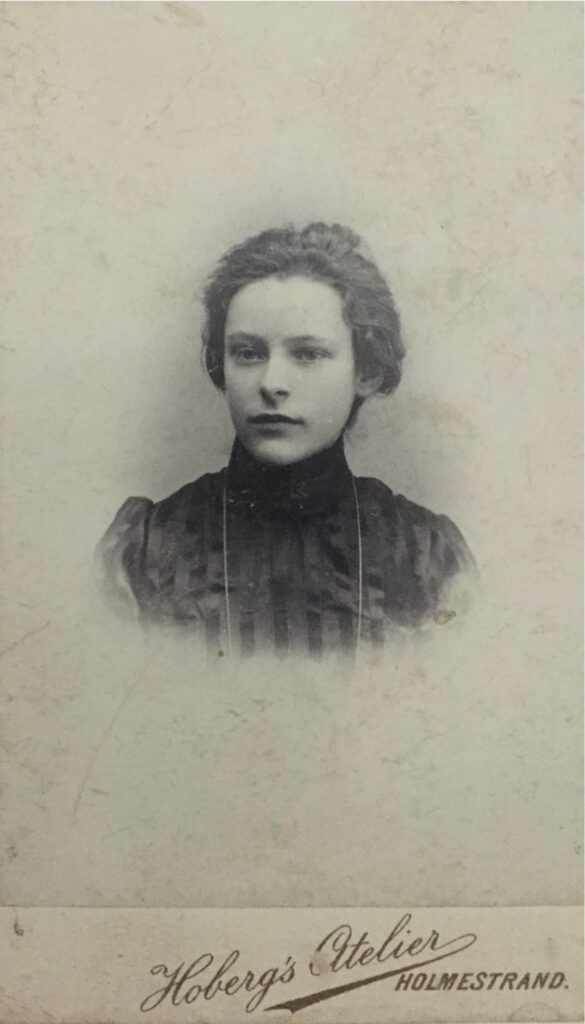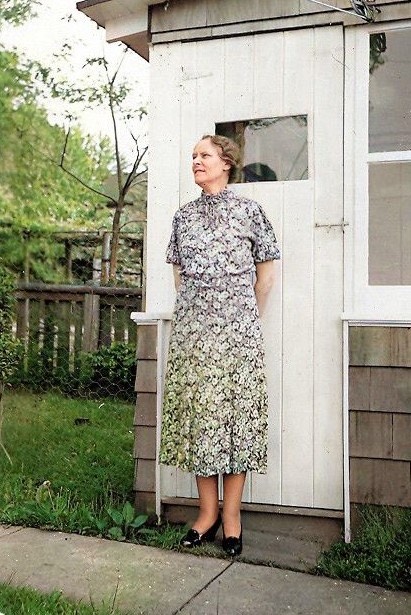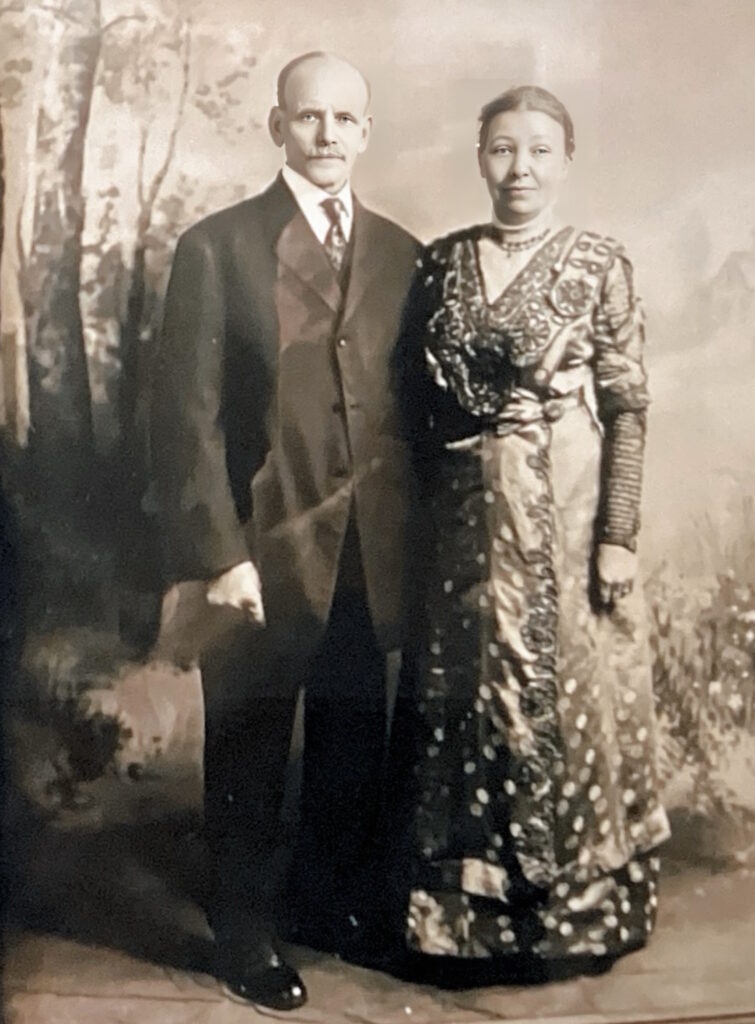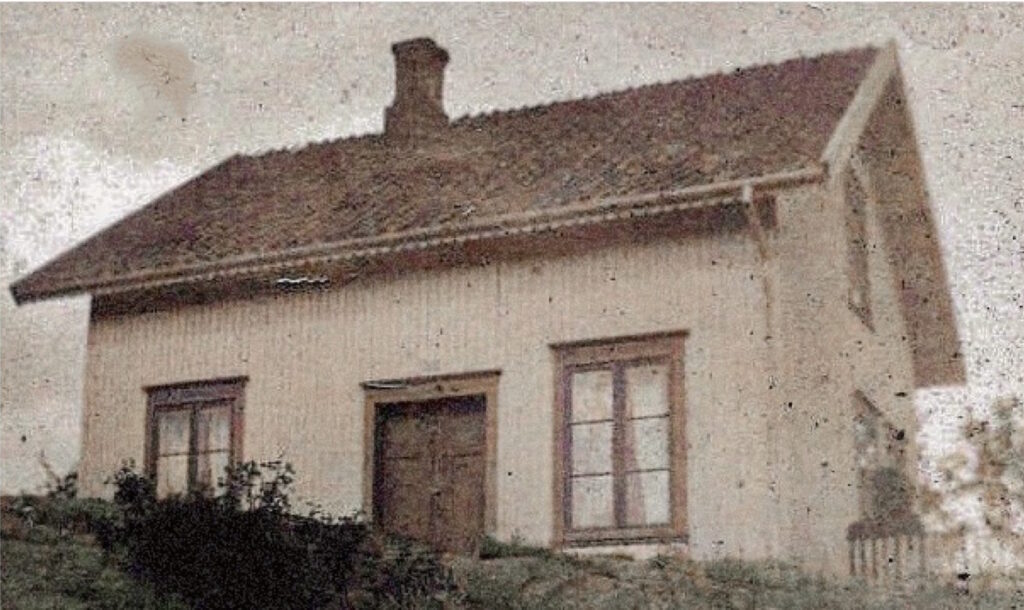A Holmestrand Immigrant’s Legacy
This is a tale about my Norwegian immigrants from Holmestrand. My grandmother, Margit, was always so proud to say she came from Norway, and her grandchildren knew from an early age that she had come from Holmestrand. In her home there were picture books and postcards to look at, and her home was decorated with woven and embroidered linens and pieces of rosemaling. When we visited her home as youngsters, it was typical to have meatballs and boiled potatoes for dinner, and homemade cookies for dessert. During the holidays she baked Jule Kake and Spritz cookies. For our journey home, which was about 90 minutes, she always sent along a treat for the kids to share in the car. Margit died in 1964 at the age of seventy-seven when I was just 9 years old. She emigrated at the age of nineteen and never lost her Norwegian accent. I can still hear it. It makes me smile.
Roots in Holmestrand
My Grandmother
Margit Martinsen 1887-1964 was born and christened in Botne parish. At the time, the family was living at Hvitsteineie. By the time she was confirmed in the Holmestrand Kirke in April 1902, the family was living at Nordre Klev. It was a walk down the hill to go to church, school, and market.


Margit’s Parents
Frithjof Martinsen/Gulbrandsen 1857-1927, was born at Blakkestadeie, in Asker, Akershus. His mother, Maren Pedersdatter, died from tuberculosis when he was three years old. He and his three brothers, Gerhard, Olaf, and Edvard were raised by their father Martin Gulbrandsen. He did not marry again until after the youngest, Frithjof, was confirmed in 1873. Frithjof worked as a sailor (matros) or ship’s steward for most of his life.
Lina Marie Evensen 1863-1951, was born in Holmestrand, and she was baptized and confirmed in the Holmestrand Kirke. Her father was Christen Evensen, a ship’s carpenter (skibstommermand), born 1831. Research shows that the Evensen roots in the Holmestrand area go back to at least the middle 1700’s.

By 1885, the Gulbrandsen family was living near the Evensen family at Nordre Forstad. Frithjof was a sailor, and Lina had already established herself as a seamstress. They were married 28 November 1886 at Vår Frelsers Kirke, now known as the Oslo Domkirke. Frithjof’s father was Martin Gulbrandsen, so Frithjof used a patronym. Lina’s father was Christen Evensen, so she used her father’s surname.


Margit was born a year after her parents married. Her father, Frithjof, was a sailor (matros). They lived at Hvidsteneie, renting a place to live without land (uten jord). She was baptized on 11 December 1887 in the Botne Kirke.

Lina had a second child, Kristian Emil, born 24 September 1891, and baptized at the Holmestrand Kirke who did not survive infancy. He died when he was eight months old from measles (meslinger). He was named after an Evensen uncle who drowned.
On a number of records their surname is Martinsen, a patronym. They eventually settled on using Gulbrandsen as a surname. This was how they were known in the United States.
Sailing Towards a New World – The Emigration
When Margit was 14 years old, a decision was made by her parents to emigrate to the United States. Margit had two maternal Tantes, Mathilde and Inger, who had already emigrated and were raising families in New York City. Margit and her mother Lina stayed in Norway for Margit’s confirmation in 1902 and to care for Lina’s elderly mother who died in 1903.
Margit’s father, Frithjof M. Martinsen, age 44, of Holmestrand, departed Christiania (now Oslo), Norway in September 1901 and arrived in New York on the ship “Oceanic”. His occupation was listed as Sailor, he had $10.00 when he disembarked and was going to his brother-in-law S. Severinsen at 109 W. 82nd Street in New York City. He returned to Norway after a time.
Four years later, Frithjof Martinsen returned to New York City departing from Christiania (now Oslo), Norway arriving in New York City aboard the ship “United States” in September 1905 at the age of forty-eight. His occupation was again listed as Sailor. He was carrying $4.00 when he arrived and was going to the home of Mr. S. Severinsen, 505 Columbus Avenue, New York. At this point he was going to find employment and a place to live.
When Lina and Margit emigrated two years later, they sailed on the same ship that Frithjof sailed on in 1905. The ship “United States” which departed Christiania (now Oslo) and arrived in early October 1907, an eleven-day journey. They sailed in second class, not steerage, and passed through the halls of Ellis Island upon disembarkation from the ship. Frithjof met them and took them to their new home at 505 Columbus Avenue in New York City.
Settling in America
Frithjof, Lina and Margit eventually settled on the upper west side of Manhattan, living at 1272 Amsterdam Avenue, a five-floor walkup apartment building. Frithjof worked at Columbia University, doing maintenance work. Lina was a seamstress for clients on the upper west side and carried her portable hand crank sewing machine where needed. She learned English and had almost no accent.
It was decided that Margit would take a position as a domestic to help her learn English. She worked for a New York family who had a summer home in coastal New Jersey. Traveling to Atlantic Highlands would have been by ferry across Sandy Hook Bay. Margit would have seen
a rock hill that rose from the bay, much like the cliff in Holmestrand. It is the highest point on the entire eastern seaboard of the United States. It reminded her of Holmestrand.
While working there, Margit met a young handyman, Ben Guttormsen, who did some work at her employer’s summer house. Ben’s parents had emigrated from Kristiansand in 1884, settling initially in Brooklyn, New York. Ben was the first of his generation born in the United States. The family moved to coastal New Jersey on Sandy Hook Bay where his father was a waterman. In 1892, his father, Peter August Guttormsen, drowned in Sandy Hook Bay when he was fishing and fell off his boat. Ben was seven years old at the time.
A New Chapter in America – Marriage, Home and Family
Within two years of her arrival in America, Margit married Bernhard Peter (Ben) Guttormsen in October 1909. The following year, their first son was born, and Frithjof and Lina became our Bestafar and Bestamor. Margit and Ben settled in Leonardo, New Jersey, a coastal town on Sandy Hook Bay overlooking New York Harbor next to Atlantic Highlands. They raised four children, two boys and two girls. As each of their four children were born, all were taken on a boat ride across the bay to be baptized at Our Saviour’s Lutheran Church in Brooklyn, New York.
Margit loved the Leonardo area because it reminded her of her hometown in Norway. She was close to the water, so fish and shellfish were plentiful. Her children grew up playing along the bay shore near the local lighthouse, beaches, and marina. There was a hill to climb within walking distance that was similar to the cliff in Holmestrand.
As a newly married couple, the question came up as to how the family would earn a living. Margit had strong feelings that her husband should not be a clammer, fisherman or a waterman and that he should earn his living on land. She had lost her grandfather Christen Evensen and uncle Kristian Emil Evensen to the sea in Norway, and Ben had lost his father in Sandy Hook Bay. Keeping those concerns in mind, Ben established himself as a carpenter and built many of the homes and buildings in Leonardo and surrounding areas. Margit and Ben put down roots in their community. She wove her Norwegian roots into the fabric of her new American life. Her parents, tantes and cousins were frequent visitors, enjoying their time with family at the shore. Meals and baked goods had a distinctive Norwegian flavor. Both Margit and Ben were active in the local church. Ben was active with the local volunteer fire department as a charter member. He and a group of local businessmen also established a local savings and loan that exists to this day. Margit and Ben had four children, eleven grandchildren and there are many younger descendants.
When Frithjof decided to retire in the 1920’s, they bought a house in Leonardo, New Jersey just a few blocks from Ben, Margit, and their grandchildren. Lina’s sisters, Mathilde and Inger and their families were frequent visitors to Leonardo, especially in the summer as it was a wonderful small town to escape the heat in the city and was known for its summer cottages, beaches and marina.
The Generational Thread
Even now when our family gets together, no matter the time of year, there is Jule Kake on the table to go with the coffee. In my family all of my siblings and I have learned how to make it. In 1940 my mother, the new daughter-in-law, watched Margit, her new mother-in-law, make Jule Kake with flour, sugar, and yeast, raisins and citron, all by feel, with no recipe. And how quickly the process was written down after that first batch! Now the younger generation is making Jule Kake too, continuing the tradition brought from Holmestrand. It may not be perfect on every attempt, but the aroma of the cardamom still fills the house. All of the families make spritz cookies because that, too, is our tradition.
A Dream Realized: Retracing Margit’s Path in Holmestrand
During September 2024, my brother and I and our spouses traveled to Norway. As a part of the trip, we came to Holmestrand. We met with Espen Watne Andresen from the Holmestrand Museum, who took us for a walk through Holmestrand, up the elevator at the train station and for a walk down Roveveien. It was there that we saw Margit’s home and walked in her steps. For me this was a sixty-year dream come true, to be able to retrace the family’s footsteps in Holmestrand. We learned about the history of Holmestrand and how the Holmestrand Kirke was established. We were fortunate to have a guided tour of the inside of the Holmestrand Kirke and learned of its recent renovation. Before leaving the area, we visited the Botne Kirke so we had a good understanding of how both Kirke’s serve different geographic areas, even though they are in close proximity.
Full Circle: Honoring Margit’s Legacy in Holmestrand
Coming to Holmestrand and walking the streets where Margit lived offered a powerful connection to our family’s heritage. From her childhood home to the Holmestrand Kirke and Botne Kirke, it was as though her journey across the ocean had come full circle through us. Margit’s life was a blend of Norwegian traditions and American opportunities. By retracing her path, we honor her story and ensure that her legacy remains alive for future generations—a testament to where we come from and the paths created for those yet to follow.
Kathy Guttormsen Rubin
